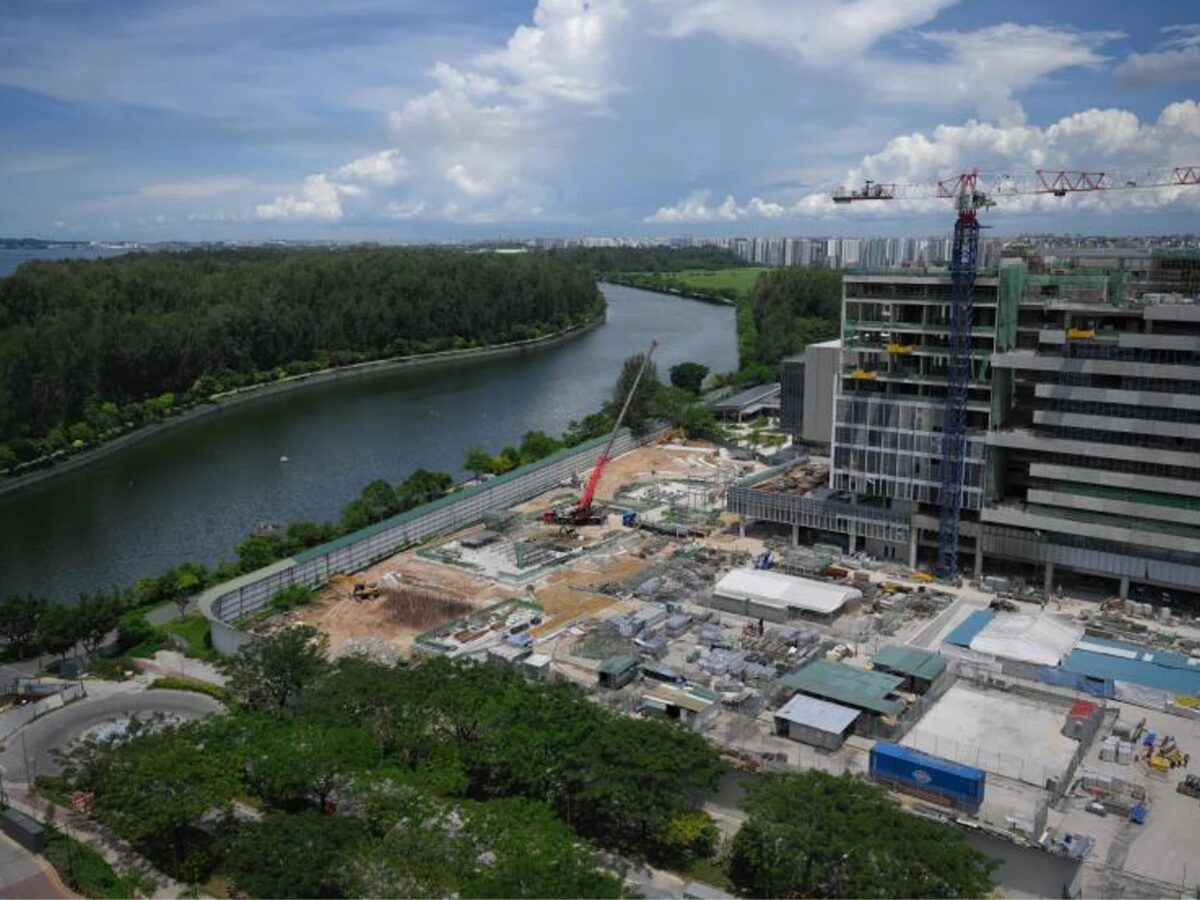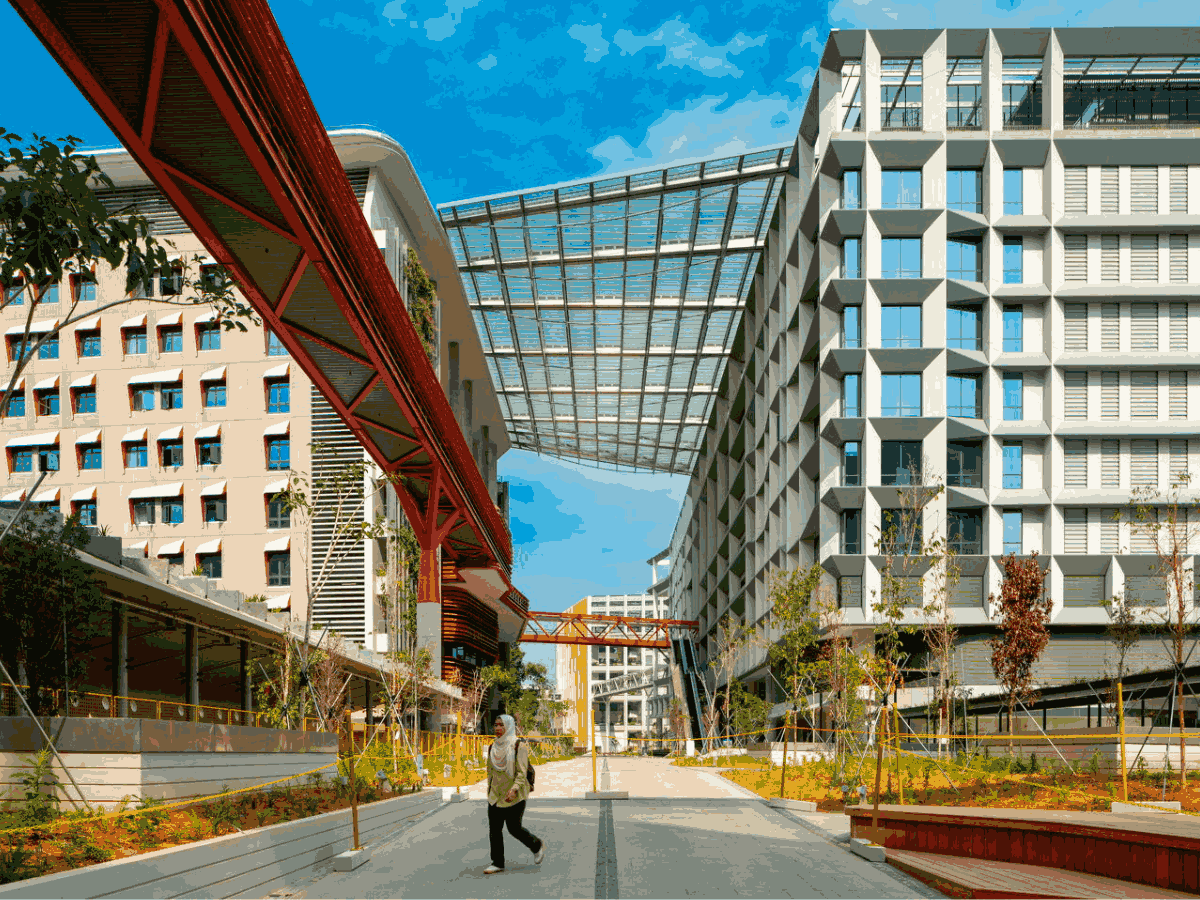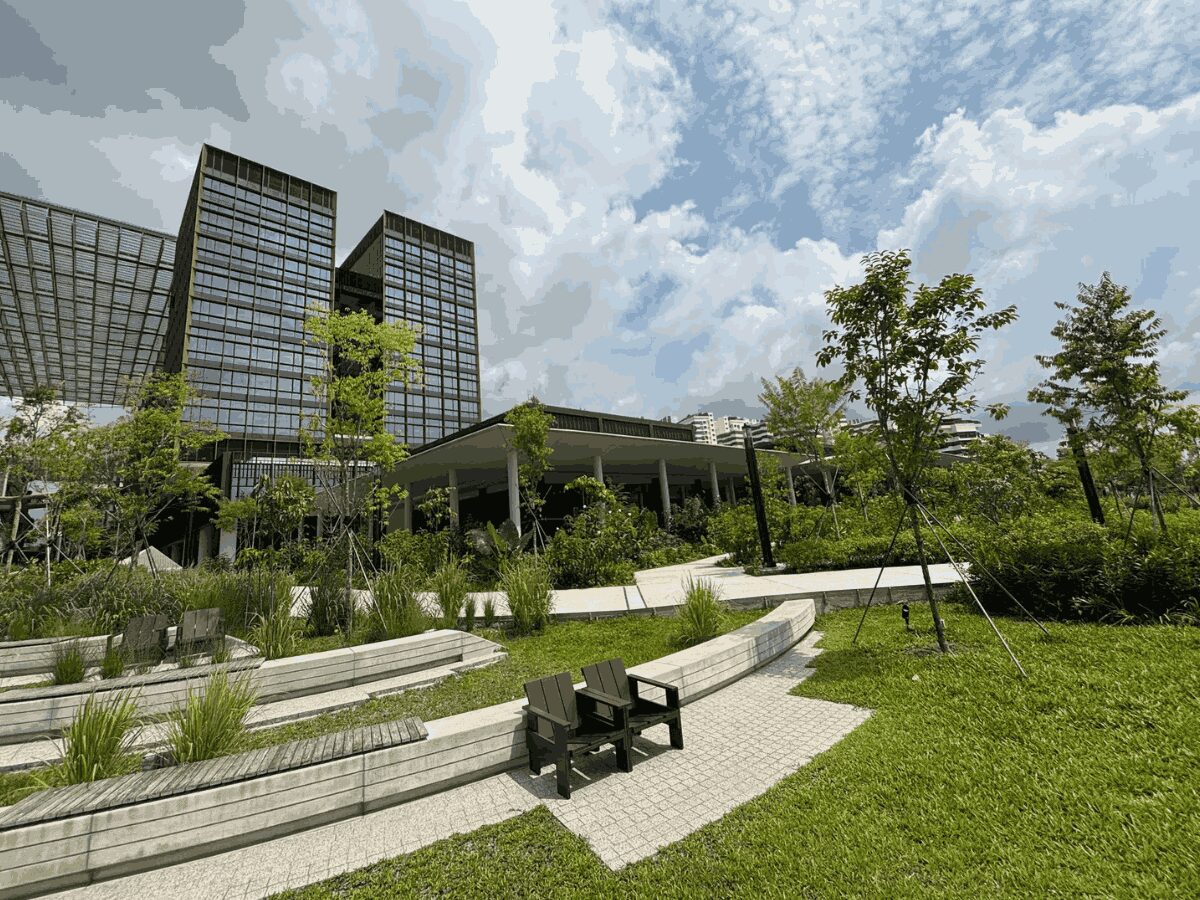If you’ve visited Punggol Digital District (PDD) lately, you’ll know things are changing, and fast. Tucked along the waterfront, on a prime parcel at 98 Punggol Way, plans for a 208-room hotel are finally picking up steam.
JTC’s hospitality site is more than just a resting spot for tech talent and business travellers. The rooms are designed for modern professionals seeking flexible stay options, high-tech amenities, and sweeping views of Serangoon Reservoir and Coney Island. The hotel will sit within a mixed-use tower, surrounded by lively eateries and retail, and linked directly to the Singapore Institute of Technology (SIT) campus via a distinctive red pedestrian bridge.
So, what makes this relaunch significant? Let’s take a closer look.
Table of Contents
- Location, scale, and timeline
- Why the tender was relaunched
- Collaboration with SIT
- Financial anchors
- Proven precedent
- Implications for the hospitality sector
Location, scale, and timeline

The proposed hotel sits on an 8,140 square metre site and forms part of a larger mixed-use tower offered on a 60-year lease under a core-and-shell arrangement. This means that while the building’s structure and façade are already complete, the interior fit-out will rest with the winning bidder. The setup encourages creative, flexible, and sustainable hospitality solutions at the heart of Singapore’s first smart district.
The site enjoys direct frontage along the waterfront, offering uninterrupted views of Coney Island. This is premium positioning designed to attract digital nomads, business travellers, and professionals seeking a balance of connectivity and lifestyle convenience.
The tender is structured as a concept-and-price exercise, prioritising innovation before cost. It officially opened on 22 August 2025, with a briefing and site visit set for 1 September 2025. Submissions close on 30 October 2025, and the winning proposal is expected to be announced by January 2026.
Why the tender was relaunched
The first tender for the hospitality development was launched after an expression-of-interest exercise that closed without an award in April 2024. This earlier attempt was conducted while the building was still under construction. The key conditions at that point included a requirement for tenderers to hold the site for at least five years and to work with the same operator for 10 years. These terms proved too inflexible for bidders.
Since then, PDD has made significant progress. As of August 2025, approximately 65% of office space across eight completed buildings has already been pre-committed, with anchor tenants such as OCBC, UOB, GovTech, and the Cyber Security Agency securing space. In total, the district spans 3.3 million square feet of business park and mixed-use facilities, forming the backbone of its live-learn-work-play vision.
Moreover, PDD’s DNA is defined by smart, sustainable infrastructure. The precinct spans 50 hectares and is designed to host 28,000 jobs. It boasts of strong connectivity and amenities with the Punggol Coast MRT station (operational since December 2024), 27,000 square metres of retail with strong pre-commitment, a district-wide Open Digital Platform for real-time data, and Singapore’s largest Green Mark Platinum mixed-use district status.
This evolution has been highlighted by Julien Naouri, Executive Vice-President of JLL, who noted that with SIT now fully operational and retail activity gaining momentum, PDD’s ecosystem has become “vibrant and integrated,” making it timely to relaunch the tender.
Looking for property in PDD? We can help…
Collaboration with SIT
One of the project’s unique advantages is its integration with the Singapore Institute of Technology (SIT). The hotel will directly complement SIT’s growing campus, which accommodates up to 12,500 students and faculty members.
Under tender conditions, the winning developer is expected to collaborate with SIT’s Bachelor of Business in Hospitality and Tourism Management programme; Singapore’s first hospitality and tourism degree offered by an autonomous university. Students will gain real-world experience through internships and placements via SIT’s Integrated Work Study Programme (IWSP), allowing the hotel to function as both a hospitality hub and an industry learning platform.
Financial anchors

The proximity of two major financial innovation hubs further elevates the appeal of the hospitality tender. OCBC is investing around S$500 million in a 430,000-square-foot innovation hub at the same 98 Punggol Way site, directly linked to SIT via a red link bridge. The new hub will house technology, innovation and fintech teams, making it a key driver of district footfall.
Less than a year earlier, UOB committed a similar amount to build a 300,000-square-foot global technology and innovation centre in PDD, expected to increase foot traffic and demand upon completion by late 2026. These financial anchors signal the district’s strength as a live-work-tech precinct.
Proven precedent
If you’re wondering whether a hotel inside a business park can sustain itself, Singapore already has a track record.
Capri by Fraser, Changi City opened in 2012 beside Changi City Point and the Expo MRT interchange, purpose-built to serve corporate travellers in the Changi Business Park cluster. The 313-key property anchored an “work-shop-stay” ecosystem that blended offices, retail and hospitality. The asset has also traded hands—most recently in 2024—which is a useful market signal that investors see durable income in business-park hotels.
At the research and innovation precinct of one-north, hospitality sits directly within the business-park fabric. The 324-unit lyf one-north welcomed first guests in November 2021 and ramped quickly, reporting occupancy above 85% early on. This is strong evidence that mixed hospitality/coliving products can capture steady demand from tech and life-science tenants nearby.
Just across the precinct, Citadines Fusionopolis (rebranded under Ascott in 2016) operates loft-style serviced apartments literally on top of one-north MRT. The Rochester Commons campus added Citadines Connect Rochester (≈135 rooms) in 2023, reinforcing an ecosystem where short- and mid-stay options support the precinct’s corporate and academic population.
Implications for the hospitality sector

As past examples have shown, performance rests on some critical fundamentals such as a large, growing daytime population; on-site retail and F&B; direct MRT access; and institutions (universities, R&D anchors, banks, government and tech agencies) that generate consistent short- and mid-stay demand.
Singapore has already proven that integrated hospitality in business-park/innovation districts can work; both commercially and operationally. PDD’s hotel tender is following a well-trodden path rather than testing an unproven concept.
For hospitality operators, developers, and institutional capital, the project represents a singular opportunity to deliver innovative lodging in a setting defined by connectivity, sustainability, and cross-sector collaboration. It is a rare chance to shape the face of hospitality within Singapore’s most technologically advanced precinct.
The post JTC relaunches tender for 208-room hotel in Punggol Digital District appeared first on .





















